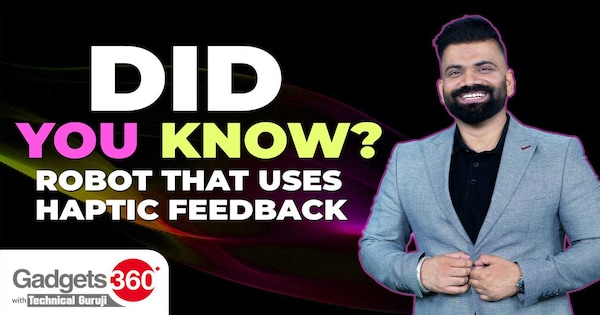Understanding Haptic Feedback
Haptic feedback refers to the subtle vibrations and tactile responses you experience while interacting with your devices, such as smartphones or gaming controllers. These small, yet significant, gestures enhance user experience, making interactions feel more realistic and immersive. With the rise of technology, haptic feedback is becoming increasingly prevalent in various applications beyond just mobile devices.
The Role of Haptic Feedback in Smartphones
In smartphones, haptic feedback provides essential tactile signals that confirm user actions. Whether it’s a subtle vibration when you tap a button or a more pronounced response during a game, these cues help users feel more connected to their devices. As smartphone technology evolves, manufacturers are incorporating more advanced haptic systems to further enrich user experiences.
Applying Haptic Technology in Gaming
Gaming consoles and controllers have also embraced haptic feedback. The technology elevates the gaming experience by providing physical sensations that correspond to in-game actions. Players can feel the rush of wind, the impact of a collision, or the texture of the environment—all thanks to advanced haptic motors within the controllers. This level of immersion can significantly enhance gameplay, making it more engaging and enjoyable.
Haptic Feedback in Underwater Exploration
Interestingly, haptic feedback technology isn’t confined to flights of fancy like gaming or smartphones. It plays a critical role in deep-sea exploration as well. Researchers often face challenges related to limited visibility and tactile feedback when working underwater. Advanced haptic systems allow them to manipulate objects and tools remotely while receiving tactile sensations in real-time, paving the way for groundbreaking discoveries beneath the waves.
Introducing OceanOneK: A Technological Marvel
At the forefront of haptic technology and underwater exploration is OceanOneK, a humanoid robot developed by Stanford University. This innovative robot is designed expressly for underwater missions and is equipped with highly advanced haptic feedback capabilities. OceanOneK’s hands can transmit the sensations of touch, allowing researchers to experience the ocean floor’s textures and materials as if they were physically present.
Enhancing Research with Haptic Technology
The incorporation of haptic feedback in OceanOneK significantly enhances the research capabilities of scientists. This technology helps in understanding marine ecosystems better and aids in monitoring underwater environments. Researchers can remotely examine coral reefs, study marine life, and even retrieve samples without putting themselves in potentially hazardous situations.
The Future of Haptic Feedback
The exciting developments in haptic feedback technology pave the way for future innovations. From smartphones and gaming to robotics and medical applications, haptic systems will likely play an increasingly crucial role across various sectors. As this technology continues to evolve, we can anticipate a richer, more immersive interaction with the digital and real world alike, opening new horizons for understanding and exploration.
The Power of Haptic Feedback: Revolutionizing Interaction and Exploration
Understanding Haptic Feedback
Haptic feedback technology has transformed the way we interact with devices. This innovative approach utilizes subtle vibrations and sensations to enhance user experience. By mimicking the feeling of touch, it allows users to engage more fully with their devices, making operations feel more natural and intuitive. Whether through smartphones, gaming consoles, or specialized equipment, haptic feedback creates an immersive environment that enhances interactivity.
Applications in Mobile Technology
In the world of smartphones, haptic feedback has become a standard feature, enhancing user interactions significantly. Users experience vibrations during notifications, while typing, or when engaging with touch-sensitive screens. These subtle cues provide reassurance, enhancing the overall user experience. By integrating haptic feedback into mobile technology, manufacturers make devices more responsive, allowing for seamless navigation and interaction.
Gaming and Haptic Innovation
One of the most popular applications of haptic feedback is in the gaming industry. Gaming controllers increasingly incorporate advanced haptic technology, providing players with realistic sensations. Whether it’s the feeling of a car engine rumbling or the recoil from a virtual weapon, haptic feedback enhances the immersive gaming experience. This technology bridges the gap between the player and the game, allowing for a deeper emotional connection to the gameplay.
Deep-Sea Exploration and Robotics
Haptic feedback technology has found groundbreaking applications beyond consumer electronics. In the field of robotics, it plays a crucial role, particularly in deep-sea exploration. Specialized robots are equipped with haptic feedback systems that allow operators to receive tactile sensations from underwater environments. This capability is essential for conducting delicate tasks in challenging conditions, such as exploring ocean floors or handling fragile marine life.
Introducing OceanOneK
One notable advancement in underwater robotics is OceanOneK, a humanoid robot designed for deep-sea missions. Developed by researchers at Stanford University, this innovative robot features advanced haptic feedback capabilities. This allows researchers to feel the textures and shapes of objects on the ocean floor remotely, creating a tactile link between operators and underwater environments. Such innovations represent a significant leap in our ability to explore and understand the underwater world.
The Future of Haptic Technology
As haptic feedback technology continues to evolve, its applications are expected to expand further. Future advancements may include even more realistic sensations that could influence various fields, from virtual reality to medical training. The potential to recreate touch sensations will largely impact how we interact with digital environments and real-world applications alike, paving the way for new innovation and exploration opportunities.
Conclusion
Haptic feedback is a remarkable technology that enhances interaction across multiple domains, from mobile devices to gaming and even deep-sea exploration. As we continue to innovate and integrate this technology into various fields, its potential is limitless. By bridging the gap between digital and physical sensations, haptic feedback is reshaping our experiences and revolutionizing the way we connect with the world.


